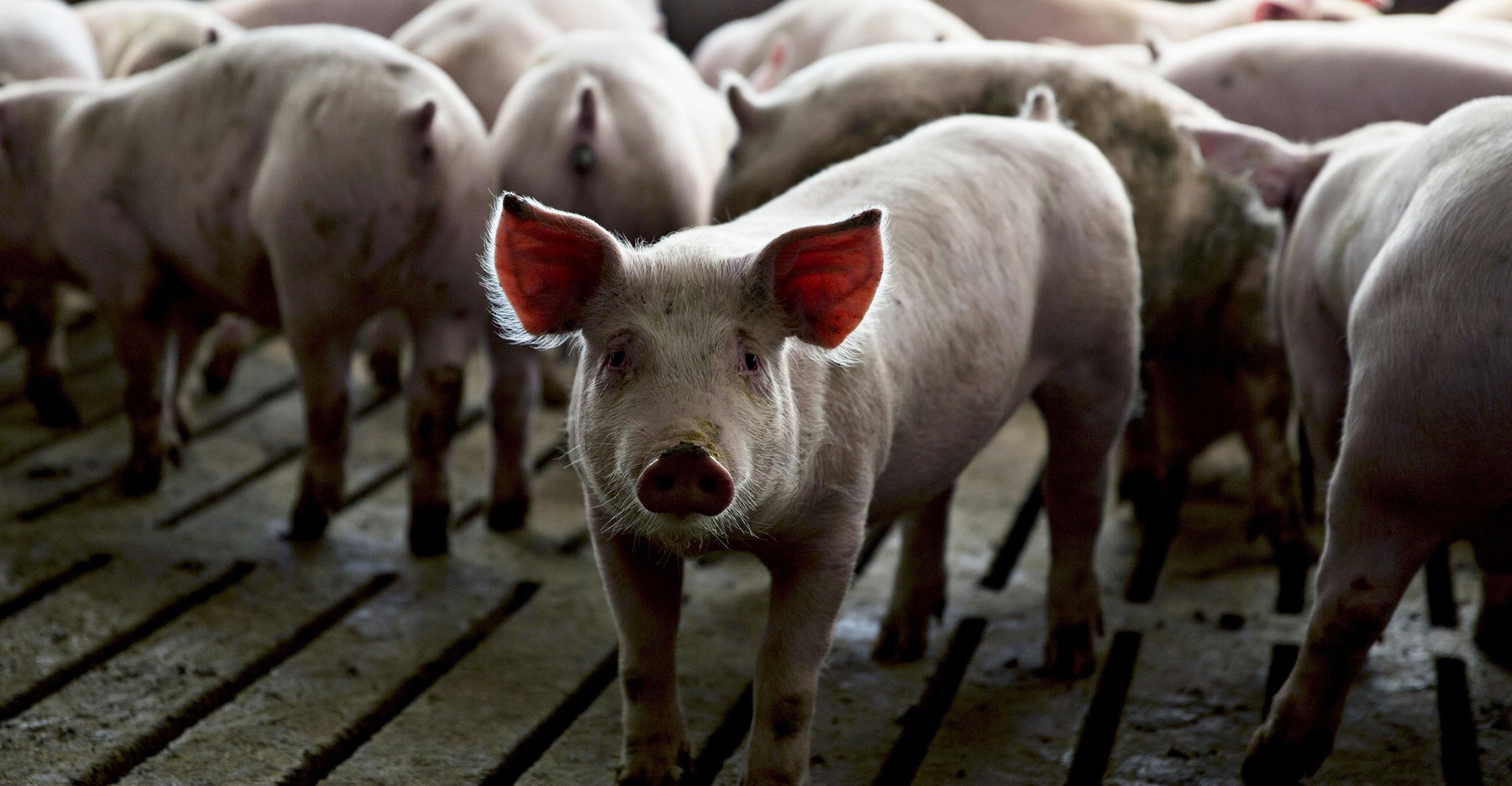For roughly half of humans, one thing is as certain as death and taxes: If you menstruate and live long enough, your ovaries will stop releasing eggs, and your menstrual cycle will end. Menopause is weird, biologically speaking. People, five species of whales…

Published a year ago on Aug 13th 2024, 12:00 pm
By Web Desk

For roughly half of humans, one thing is as certain as death and taxes: If you menstruate and live long enough, your ovaries will stop releasing eggs, and your menstrual cycle will end. Menopause is weird, biologically speaking. People, five species of whales, and maybe chimpanzees are the only animals that seem to live beyond their reproductive years. Menopause doesn’t have a lot of evolutionary value: beyond the hot flashes and night sweats, the loss of estrogen increases the risk of many of the chronic diseases we keep track of, including Alzheimer’s disease, osteoporosis, and stroke. Despite their obvious importance, scientists are only just beginning to understand how ovaries work, and how their rapid aging affects the rest of the body. Traditionally, longevity researchers have relied on lab animals to study aging biology because humans live too long to study. If we can use a human organ as a proxy for other human tissues, identifying potential anti-aging treatments that translate to the real world could get a little easier. Because ovaries biologically age faster than other human tissues, they’re a perfect testing ground for scientists to study the process of aging. Studying reproductive longevity could help jumpstart an anti-aging industry that, despite loads of hype, has struggled to make progress. Matt Kaeberlein, a longevity researcher and CEO of health care tech company Optispan, said that if everything we know about the biology of aging could be drawn on a map, it would look like a map of the Earth drawn in 500 BC. It would be helpful, but if you sail too far, you’ll fall off the edge and plummet into the unknown. Deeply rooted sex biases in academic science stalled the study of reproductive aging for a century. But an ongoing clinical trial in New York City may be onto something big: A drug we already know is generally safe could be used to delay menopause and extend the healthy lifespans of people with ovaries. Bérénice Benayoun, a scientist studying sex differences in aging at the University of Southern California’s Leonard Davis School of Gerontology, is optimistic about the study’s potential. “For most women, delaying menopause will be nothing short of a health miracle.” Ovaries age really quickly. We don’t know why. In sixth grade, my biology teacher passed out sheets of paper with illustrations of the female reproductive system, featuring the ovaries as polka-dotted balloons flanking the uterus. We learned that they hold eggs, and one by one, month by month, eggs pop out until there aren’t any left. That’s all ovaries were to me: bags of eggs that mattered only insofar as they carry baby-making material. But despite what people may think, ovaries matter for more than just reproduction. Jennifer Garrison, professor at the Buck Institute for Research on Aging, thinks of ovaries as the master architects of health for people assigned female at birth. (Trans men, intersex people, and nonbinary people can have ovaries, too.) “Essentially, we have allowed women’s health as a whole to be pigeonholed through the lens of fertility,” she said. But the ovaries sit at the center of a complex molecular signaling network that doesn’t just guide the creation of new life; Garrison views them as “the pacemaker for aging in women’s bodies.” Last year, a study found that individual organs age at different rates — organs that accumulate more aging-related proteins are more likely to cause problems down the line. No matter the cause, “the fact that [ovaries are] aging faster than the rest of our tissues is a real problem,” Garrison said. While testes also change with age, releasing less testosterone over time, their decline is slow and gradual. It is far from the sudden hormonal chaos of perimenopause, the transitional period leading up to menopause. By the time someone is 40-something years old, their ovaries start behaving erratically, producing fluctuating levels of estrogen and progesterone until they restabilize around a much lower baseline. This transition period can last for a few months or even years. Estrogen (which is naturally produced by both males and females) appears to play an important role in biological functions that go well beyond puberty and reproduction. Estrogen is a hormone, a chemical messenger that travels through the bloodstream to send information to cells throughout the body. While many of its specific functions are still unclear, estrogen seems to help maintain bone structure, keep cardiac cells healthy, and even act as a neurotransmitter in the brain. Since it does so much, estrogen’s decline increases a slew of health risks. As a result, Benayoun said, “Women live longer than men, but they usually do so in a much more frail state.” The search for anti-aging drugs At the cellular level, aging is basically the same across the animal kingdom. As we get older, gene expression starts to go off the rails, and the resulting DNA damage makes it harder for cells to work properly. As cells become less effective at making proteins, getting rid of waste, and repairing damage, they stop working altogether, making it harder for the body to recover from stress, illness, and injuries. Longevity researchers have spent decades hunting for specific genes and proteins to target in anti-aging treatments. While literally extending the human lifespan or maintaining eternal youth is still far-fetched, improving healthspan — the number of years one can live in good health, without pain or chronic disease — is a more realistic target. But the aging process is complicated, with lots of cellular changes happening at once, and scientists have historically overhyped the potential of anti-aging targets. For example, proteins called sirtuins had a moment in the aughts. Directly activated by a compound found in grape skin, sirtuins inspired too-good-to-be-true reporting that the secret to a long, healthy life is drinking red wine. But according to Science, the early sirtuin data was “a steaming pile of artifactual results, overinterpretation, and publication bias.” Kaeberlein, one of sirtuins’s earliest advocates, will be the first to tell you that it doesn’t seem to be the miracle target scientists once thought it was. Data across many different labs over the past couple decades points toward a different, more promising protein: mTOR, part of a signaling pathway that tells cells all over the body when to grow and when to save energy. As we age, mTOR activity changes, leading to increased risk of immune problems and damaged cells. A drug called rapamycin, derived from bacteria found in the soil of Easter Island, tempers mTOR activity. Rapamycin is great at soothing an overactive immune system; today, it is approved by the US Food and Drug Administration (FDA) as an immunosuppressant, and is commonly prescribed to people after an organ transplant. Researchers have found that rapamycin prevents activation of primordial follicles — or immature egg reserves — in lab mice, prolonging ovarian function. The drug’s mTOR-suppressing qualities may also improve symptoms of age-related chronic diseases in humans. The evidence supporting rapamycin’s anti-aging potential is strong, but longevity and wellness research is also rife with noise. Beyond sirtuins, wellness-obsessed millionaires like Bryan Johnson try everything from strict supplement regimens to cryotherapy chambers in the pursuit of eternal life. All the researchers I spoke with agreed that eternal life isn’t the goal of longevity research — it probably isn’t possible, anyway. After decades of experiments, Kaeberlein believes that the mTOR pathway and rapamycin are still “the gold standard when it comes to targeting the biology of aging.” And while rapamycin almost certainly won’t make anyone live forever, it holds particular promise for slowing down the aging of ovaries. Can rapamycin extend ovarian health? Scientists have used many different animals as a model of aging in the lab, from microscopic worms and African fish, to mice, macaques, and marmosets. But the best model organism may have been inside us all along. When it comes to aging, Kaeberlein said ovaries are “the canary in the coal mine.” They age quickly enough to study within a grant’s typical three-year project period, and as far as we know, every single person with ovaries will experience menopause in one way or another, should they live long enough. The precise connections between age, number and quality of eggs, menopause, and healthspan are still uncertain, but the correlations exist, and they’re strong. “What is clear,” Garrison said, “is that if we can preserve the endocrine function of ovaries, that will hopefully have a positive impact on female health care.” About one in five birthing parents have their first child after they turn 35, the age at which doctors start labeling pregnancies as higher risk. People are increasingly waiting until their mid-30s or later to have kids, whether due to financial constraints, higher education, or simply wanting to enjoy childless adulthood longer. Delaying ovarian aging by a few years could preserve fertility for prospective parents, in addition to staving off the side effects of menopause. However, Benayoun said, it wouldn’t necessarily prevent eggs from accumulating damage over time. Just as older sperm comes with higher chances of birth defects, older eggs mean greater genetic risks. Yousin Suh, a reproductive aging researcher at Columbia University, has led her research team in studying cells from human ovaries, sampled from people in their 20s through their early 50s. In a preprint currently undergoing peer review, they reported that ovarian cells from people between 49-54 showed signs of aging that are usually seen in the organs of much older people, including DNA damage and overactive mTOR. For the past year, Suh and Zev Williams, chief of reproductive endocrinology and infertility at Columbia University Irving Medical Center, have been running a clinical trial in women between 35 and 45 years old to test whether low-dose rapamycin can slow ovarian aging. The Validating Benefits of Rapamycin for Reproductive Aging Treatment (VIBRANT) study is still actively recruiting participants, but preliminary data from the first 34 participants is “very, very exciting,” Suh told The Guardian. Early results suggest that the drug might slow ovarian aging by about 20 percent. If those results hold up, rapamycin could delay menopause by five years and help people stay healthier longer, and keep the option of having children more open. “In a way, our results are too good to be true,” she said, “except, because rapamycin is so well-studied, we know they are true.” While Suh and Williams intend to include over 1,000 participants in their study, their pilot study was mainly designed to make sure rapamycin doesn’t have any unintended side effects. At the high dose taken by transplant patients, rapamycin could stop ovulation, potentially reducing fertility rather than prolonging it. But VIBRANT participants only took a weekly dose of rapamycin, and that dose was less than half what a transplant patient would take in a day. No serious problems have been reported, paving the way for future research. “The scientific justification for it is very strong,” said Kaeberlein, who was not involved in the study. Final results from the first phase of VIBRANT should be published in two years, and will be followed by a study with a much larger group of people. Benayoun is optimistic that, since rapamycin is already FDA-approved, promising clinical trial results could translate into real-world treatments “in a matter of years, not decades.” Research in women’s health is just getting started Given rapamycin’s well-established success in the lab, one might wonder why we aren’t already taking low-dose rapamycin pills. If the drug can make us live longer, healthier lives, and has limited side effects at the right dose, why aren’t we shouting about it from the rooftops? Part of the problem is the lack of clinical trial data demonstrating its anti-aging potential. It’s really hard to study longevity in humans: We live a long time compared to lab mice or worms, and the US National Institutes of Health (NIH) only funds research projects for a few years at a time. And because rapamycin is cheap and already on the market, it doesn’t offer much of a business opportunity for the pharmaceutical companies and venture capitalists that usually fund the final stages of drug development. “It’s been very challenging to get any funders to step forward to support clinical trials with FDA-approved drugs for longevity or healthspan because of the lack of profit incentive,” Kaeberlein said. Ideally, the government would fund this kind of research, he added, but “the NIH has dropped the ball.” Historically, the NIH has underfunded reproductive aging research compared to disease-specific fields like cancer. Worse, it has often ignored women’s health altogether. “With half of the human population eventually experiencing menopause, it’s astounding that there aren’t more studies trying to defer its impacts,” Benayoun said. It wasn’t until the NIH Revitalization Act passed in 1993 that, barring extenuating circumstances, clinical trials were required to include women. Before 1993, no such rule existed; researchers often excluded women from clinical studies out of fear that their menstrual cycles would muck up the data. Similar concerns about hormone fluctuations (and other lab-animal-specific concerns, like mating and fighting) still inform a lot of preclinical animal research. Until 2009, most studies in fields like physiology and pharmacology only used male lab animals, or didn’t report the sex of their animals at all. It wasn’t until 2016 that the NIH began requiring grantees to perform preclinical experiments in both male and female animals. This deeply rooted sex bias stalled research progress for decades, Garrison said. “If you don’t study females, you’re not going to learn anything about their physiology.” When females were considered in research, it was usually regarding reproduction and fertility — often with the goal of bolstering livestock breeding programs. “Reproductive biology has really been focused on women as incubators,” Garrison said. Only in the last few years have scientists like Garrison started to reframe the age-related functional decline of ovaries as a health issue — not just a fertility issue. But after so many years of underfunding, “there’s a lot of basic research still to be done in this field,” Kaeberlein said, and not many scientists getting grants to pay for it. “The NIH is like a battleship,” Garrison said. “Getting it to turn takes a long time.” More studies like VIBRANT are finally on the horizon. Earlier this year, Jill Biden announced that the Advanced Research Projects Agency for Health (ARPA-H) would invest $100 million in women’s health research. In March, President Joe Biden also asked Congress for a $12 billion investment in women’s health research. While Congress likely won’t fork that money over anytime soon, Garrison said “the fact that we’re even having this conversation — that it’s being had on that level — is pretty impactful and dramatic.”
Source: Gray, Nats reach deal to avoid arbitration
- 18 hours ago
Diaz picked Dodgers because 'I'm looking to win'
- 18 hours ago
Under-19 Asia Cup: India beat Pakistan by 90 runs
- 12 hours ago
Pakistan aims to become model in digital assets regulation: Bilal saqib
- 12 hours ago
Jays president Shapiro given new 5-year deal
- 18 hours ago
Australian PM declares Sydney shooting a ‘terrorist’ attack targeting Jews
- 12 hours ago

How do you know if you’re wasting your life?
- 4 hours ago
NHL board of governors eager to see more 'color vs. color' jersey matchups
- 18 hours ago
Sources: Rangers address needs with 3 signings
- 18 hours ago
Security forces kill 13 Khwarij in two separate engagements in KP: ISPR
- 13 hours ago
Bondi Beach shooting: Australia hails ‘hero’ Ahmed who stopped gunman
- 12 hours ago

Pakistan condemns attack on UNISFA in Kadugli, Sudan
- 12 hours ago
You May Like
Trending








